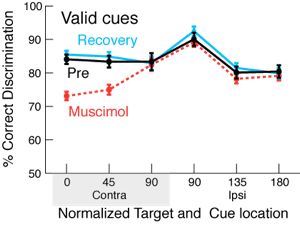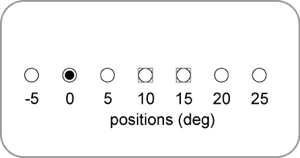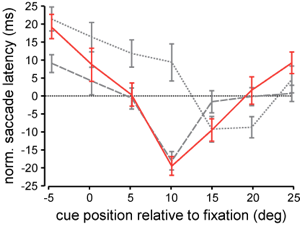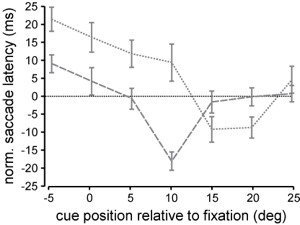Visual Attention

Attention has profound effects on visual processing, allowing us to strategically select, filter, and prioritize the vast amount of information in the visual environment. Attention can be shifted in two modes: it can be reflexively “captured” by a salient stimulus, or voluntarily focused by top-down mechanisms on a selected object of interest.
Research in the lab investigates the functional relationships between attention, saccades, and reaching movements. We are also investigating the roles of the superior colliculus (SC) and frontal eye field (FEF) in reflexive and top-down attention shifts.
When a portion of FEF is temporarily inactivated, performance is worse when a discrimination target embedded in distractors is presented in the inactivated part of the visual field. When the target is presented elsewhere, performance is normal.
Effects of FEF inactivation on Visual Attention

A transient pre-cue at a given location reduces the latency of saccades made to the same location. The upper right panel shows saccade latencies to a target located either 10° (dashed line) or 15° (dotted line) to the right of fixation, as a function of the location of the pre-cue (indicated on the abscissa). Latencies are shortest when the cue location coincides with the location of the target. Is this facilitation due to faster visual processing of the saccade target, or is it due to facilitation of movement preparation?
To distinguish between visual and motor facilitation, we adapted saccades so that a 10° saccade would be made to a visual target presented at 15°. As shown in the lower panel, we found that saccade latencies were shortest when the pre-cue was presented at the movement goal location (10°) rather than at the visual target location (15°).
Attention at the saccade goal, not at the target location, facilitates adapted saccades


